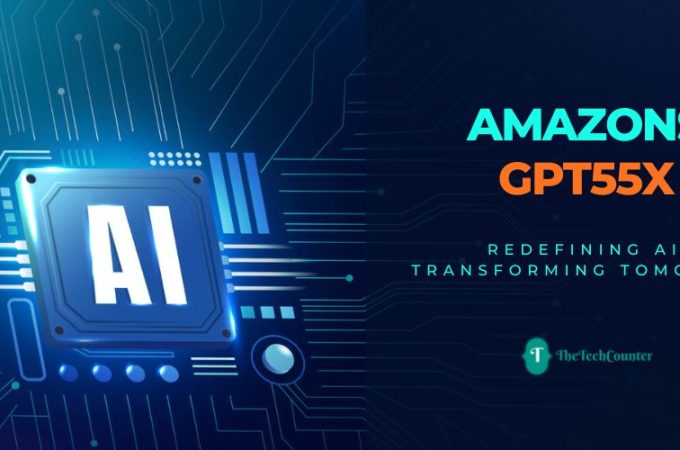
Top Node.js Development Trends and Predictions in 2024
The Node JS framework is rapidly gaining attention from the developer community for being a convenient alternative for scripting both front-end and back-end using the same programming language. Also, it offers businesses the ability to build dynamic, fast, and highly functional apps with real-time results. In this blog, we have listed some of the top development trends in Node JS that you need to watch out for in 2024.
Table of Contents
ToggleWhat is Node.js?
Node JS is an open-source JavaScript framework that is known for its flexibility and efficiency in real-time applications. It is built on Google Chrome’s JavaScript V8 Engine, making it best suited for data-intensive real-time applications. Also, it uses asynchronous programming. The best thing about Node.js is that it runs in a single process, without the requirement of a new thread in response to every request.
Moreover, Node.js is developer-friendly because front-end developers can use JavaScript to write server-side as well as front-end code without having to learn another programming language. The applications written in Node JS can be run on the Node JS runtime in all leading operating systems, like OS X, Linux, and Windows.
Why Use Node JS?
Some of the compelling reasons to use Node.js are:
- Node JS uses event-driven architecture and is built on non-blocking input-output. This makes Node.js lightweight and easy to run.
- The Node.js framework is built to accommodate thousands of connections simultaneously without any hassle. This makes it best for fast-response apps like games, chat rooms, and real-time applications.
- Node JS is easy to install and contains over 1 million packages in its libraries, consisting of reusable modules. It is also one of the largest open-source libraries in the world.
- Moreover, Node.js applications are known for not buffering the data; instead, they release the output in chunks.
- Besides that, Node JS runs efficiently on Windows, Linux, and Mac OS using the V8 JavaScript engine natively without requiring a virtual machine. This makes Node.js faster than its other counterparts.
The vast libraries of Node.js are its other superpower, enabling developers to create applications with varied functionalities. Additionally, the maintenance cost of Node.js applications is significantly less than its other counterparts because of the open-source, popular JavaScript. This eliminates the requirement of special purchases and the easy availability of developers, resulting in businesses shifting their attention towards it for their diverse apps.
Top Node JS Development Trends to Watch in 2024
In recent times, the Node JS framework has drawn lots of attention for the development of enterprise-scale applications. The ability of the Node JS application to process large amounts of data and the number of concurrent connections make it highly relevant in modern-day applications. Let’s further look into some of the trends that have rendered it more popular.
Usage of microservice architecture
The microservice architecture uses many small and independent services to build a large application. With the help of microservice architecture in Node JS, no matter how large the application, it can be broken down into smaller components. This feature of Node JS makes the app more robust and functional, even if an error occurs in one of the smaller components.
Within Node.js, there are many microservice frameworks, which include Next and Express. Some of the benefits of using a microservice architecture are as follows:
- Quick to develop, the microservices can be developed, tested, and deployed independently, which means that developers can work on various projects at the same time.
- Since these microservices are not dependent on each other, they can also be easily iterated.
- The non-functionality of one microservice doesn’t affect the entire application. So, it becomes easy to work on and upgrade any particular microservice.
- The microservices architecture of Node.js enables the entire application to be built with the help of smaller components. This makes it easy for businesses to outsource parts of the application to external vendors in cases where additional domain expertise is required. It also decreases the cost of production and eases the development process.
Front-end and back-end development using JavaScript
While JavaScript is a popular programming language, Node.js is known to be the server-side king of JavaScript in the programming world. It is easier to maintain and increases the productivity of programmers. Because of the unified language of JavaScript used in the front-end and back-end, full stacks like MEAN and MERN with Node.js are going to be a top development trend in 2024, considering the rising popularity of these frameworks.
GraphQL with Node JS
GraphQL, a query language and runtime for APIs, was launched by Facebook. As opposed to the REST API, GraphQL is known for retrieving data that is required without any extra baggage, which increases the efficiency of applications and also reduces the weight of data transacted over the network.
- Node JS is already known for its speed and efficiency, and when it is coupled with GraphQL, the applications will become more efficient and responsive. The real-time applications will benefit a lot from this powerful combination.
- GraphQL and Node.js, when used together, can provide a highly personalized experience to end users. With GraphQL will come a more flexible querying environment that will yield accurate and refined data outputs. This will enhance the overall satisfaction of the end user and result in higher engagement rates for the applications.
- As a framework, Node.js relies on data from many sources. Combining it with GraphQL’s ability to integrate the data can help with extensive data transactions in enterprise-level applications.
Increase in market share of the MEAN and MERN stacks
Enabling rocket-speed and super functionalities, the MEAN and MERN stacks, including Node.js, are reclaiming the market with full-stack app development. Both of these are leading, free, and open-source programming language stacks for creating modern applications. Top companies like Netflix, Airbnb, Uber, Facebook, and many more are already setting trends by leveraging these stacks.
The components of the MEAN stack are MongoDB, Express, Angular, and Node.js. On the other hand, the MERN stack consists of MongoDB, Express, React, and Node.js. These full stacks allow easy front-end and back-end development of complex solutions like e-commerce platforms, SaaS, large-scale apps, social media platforms, etc. Delivering faster results with a significantly lower development cost, businesses and developers around the world are rapidly turning towards MEAN and MERN as part of their tech stacks.
Increase in usage of Node.js in real-time applications
Node.js is the ultimate framework for building real-time applications that offer uncompromised speed, accuracy, and high performance. Some of the real-time applications that are fired up using Node JS and are trending are online gaming applications, video conferencing applications, instant messaging applications, and feature-rich applications. With faster outputs, excellent UI/UX enablement, and high data processing power, Node.js works wonders for next-gen web apps, mobile apps, and PWAs.
Serverless architecture development
The latest trend in the web development ecosystem is serverless architecture development. It doesn’t require any external server, database, or other infrastructure, which is how Node.js works. This architecture works on a pay-as-you-go model where you do not need to maintain a heavy-scale server. Also popular as Function-as-a-Service, or FaaS, it is supported by Amazon Web Services, Microsoft Azure, and Google Cloud Platforms. In 2024, deploying Node.js applications is going to become more accessible, with many other benefits listed below.
- With serverless architecture, you are required to pay as you go. As there are no servers to maintain, upgrades can be easily done, and the application setup can be scaled without hassle. This makes Node JS an economical technology to deploy.
- The serverless architecture used in Node.js offers great speed and has no infrastructure. This enables the Node.js applications to be deployed in the minimum amount of time while keeping them easier to scale. This also enables the developers to focus more on business logic instead of regularly maintaining the code.
Internet of Things and Node JS
The Internet of Things (IoT) is the next big technology revolution, redefining how we interact with digital devices that comprise our surroundings and make our day-to-day lives easier. This IoT network comprises interconnected devices ranging from microwave ovens to industrial sensors, our fitness bands, phones, smart gadgets in the home, and even our automobiles.
Node JS’s lightweight and event-driven nature is best suited for the needs of the Internet of Things ecosystem. Additionally, its capability of handling multiple connections at the same time also makes Node.js an ideal choice for making modern apps for acute technological needs. In the coming years, the combination of IoT and Node.js is only going to get more interesting. Some of the developments to watch out for are:
- IoT works on real-time data, while Node.js is known for supporting real-time applications. This enables IoT applications to be monitored, controlled, and used in real-time.
- Most IoT devices function on a very limited source of power, which in many cases can be a pair of batteries. Node JS is known for faster processing, which leads to lower hardware energy consumption. This makes Node.js a top choice for IoT applications.
- Since Node.js is a cross-platform framework, it can work efficiently on different operating systems. This allows businesses to create versatile IoT applications that work on different devices.
- Node JS’s capability of handling multiple data streams can be further integrated with Gen AI to derive actionable insights and help in the smart decision-making process.
- Further, Node JS’s capability of being easily integrated with security protocols and encryption programs will help in the security forefront of the IoT application. It will protect the devices from potential cyber threats.
Dealing with modern-day cyber threats
Modern-day web applications are always facing the threat of cyberattacks. Some of the common security issues faced include text injections, cross-site scripting, and unauthorized data access. To deal with these miscreant activities, Node JS has community-created modules and built-in features. Some of the tools that can help in the security of applications built using Node.js are as follows:
- Helmet is built for the Express module of Node JS applications to set HTTP headers against web attacks.
- The rate-limiting tool of Node JS helps in eliminating the threat of brute force attacks.
- Input validation helps reduce the threat of injections.
- Authentication and authorization are also handled in Node.js applications with the help of JSON Web Tokens and OAuth access control.
Cloud Computing and Node JS
Cloud computing enables businesses to share computer sources and data storage sources on demand. It is an evolved form of conventional mainframe-based computing with greater audience reach. With the implementation of cloud computing in applications, end users can access files, documents, and applications over the Internet from anywhere at any time.
Due to its vast popularity, Node.js is adopted in cloud computing ecosystems like AWS Lambda and Azure Functions. This enables businesses to cut extra costs by eliminating deployment resources and focusing on business growth. Hence, this particular trend will push businesses to adapt Node.js frameworks for their upcoming web application projects.
AI and ML in NodeJS applications
Artificial intelligence and machine learning power can be easily integrated into Node.js applications because of microservices, non-blocking architecture, seamless data streaming, and real-time computing capability. The ability of Node.js applications to efficiently stream data with many interconnected devices makes them ideal for real-time processing and yielding a high volume of computed data output.
The community spaces of Node JS will also be interesting to watch out for, as more developers are taking an interest in applying Gen AI and ML-based algorithms to the Node JS development ecosystem while showcasing their coding prowess. Overall, Node JS is an exciting framework that holds immense potential to leverage AI and ML for a brighter future.
Conclusion
In 2024, Node.js is undoubtedly going to be a top interest for developers in web application development. With a promising technology ecosystem, as mentioned in this article, the popularity of Node JS is going to grow even further in the years to come. Node JS has undoubtedly proved to be a catalyst for next-generation applications like Netflix, LinkedIn, and PayPal, among others. Companies like Twitter, Netflix, Trello, AirBnB, and Walmart have leveraged the power of the best Node.js frameworks in their web applications.
These evolving trends and promising predictions in Node.js development meet the evolving needs of today’s businesses, like swift deployment, easy maintenance, and security of applications, among others, for assured growth. Undoubtedly, in years to come, the NodeJS framework is going to fuel the aspirations of many more businesses.

Harsh Mistri is a Digital Marketing Consultant and professional Blogger. He has 6+ years of experience in SEO, SMO, ASO, Blogging, ORM & Google Ads. He loves Blogging Very Much.




